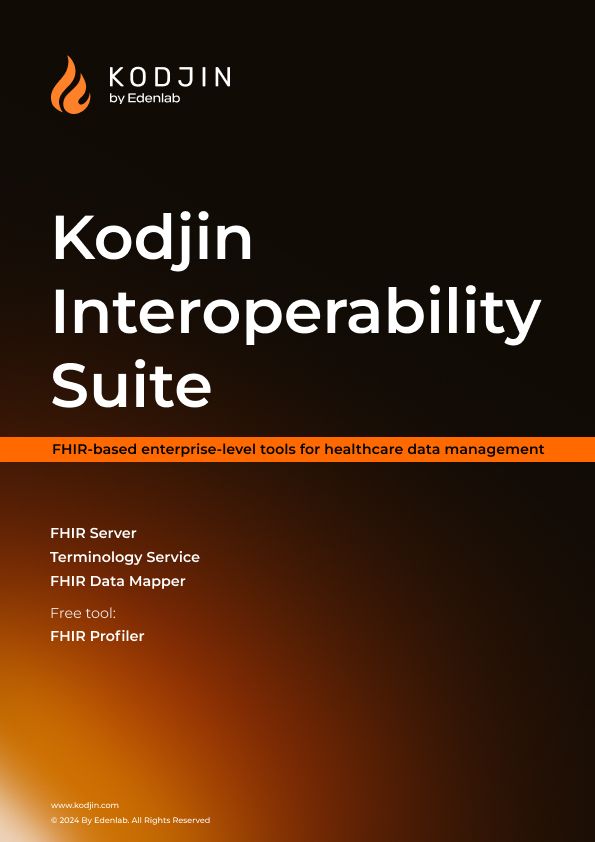In the ever-changing healthcare landscape, using big data for artificial intelligence (AI) and analytics presents promising opportunities. The rapid growth of data led to the emergence of big data, characterized by vast and complex datasets that traditional databases struggled to handle. Intelligent healthcare systems, leveraging big data predictive analytics, enable identifying individuals who would benefit most from interventions, enhancing understanding of side effects and risks.
However, leveraging big data for AI and analytics comes with significant challenges. Accuracy becomes paramount as healthcare data, including personal health records (PHRs), can be prone to errors, abbreviations, and inconsistencies. The sheer volume and heterogeneity of big data introduce noise and varying data quality and completeness levels, leading to false discoveries and biases. Furthermore, the integration and sharing of unstructured clinical data pose significant difficulties, limiting the effectiveness of data mining in healthcare.
This article will delve deeper into big data problems in healthcare. We will explore the complexities of analyzing unstructured data, ensuring data accuracy, addressing privacy and security concerns, and the need for robust healthcare infrastructure and technologies. Understanding these data and AI challenges in healthcare can pave the way for effective and responsible use of big data to transform healthcare delivery and outcomes.
Data for AI and Analytics: Challenges of Big Data
1. Data Accuracy
The diversity and rapid flow of healthcare data make capturing precise and meaningful insights one of the main problems with big data in healthcare. However, accurate data is essential for building robust AI models and making informed decisions. Here are the main reasons behind capturing accurate data for AI and analytics in healthcare:
- Volume, Variety, and Velocity of Healthcare Data: Healthcare generates vast amounts of data from diverse sources, such as EHRs, medical devices, wearables, and administrative systems. Handling the rapid flow of data requires real-time capture and processing capabilities.
- Fragmented Data Sources and Inconsistent Formats: Healthcare data is often fragmented across multiple systems and databases, making integration complex due to variations in data models, standards, and formats. Inconsistent formats prevent seamless data aggregation, impacting data quality and comprehensive analysis.
- Data Silos and Interoperability: Data silos within healthcare systems obstruct information exchange among stakeholders, leading to isolated data repositories. It may cause such challenges of big data for AI in healthcare as lack of interoperability and difficulties in capturing a comprehensive view of a patient’s medical history.
- Incomplete or Erroneous Data: Erroneous data significantly compromises the accuracy and reliability of AI and analytics outcomes. Data entry errors, missing information, and outdated records result in skewed results and inaccurate predictions. Ensuring complete and accurate data is vital for deriving meaningful insights and making informed decisions.
2. Lack of Integration in Healthcare Delivery
Fragmented patient care hampers seamless coordination and poses significant challenges in healthcare delivery. Here are the main reasons behind this issue:
- Miscommunication During Care Transitions: Incomplete or incorrectly interpreted information exchange during transitions between care settings contributes to medical errors and compromises patient care and outcomes.
- Unstructured and Undiscovered Data: Healthcare data from various sources often lack structure. Balancing data accessibility with protecting patient, staff, billing, and performance information adds complexity. Enhancing electronic health record (EHR) systems to be intelligent and interoperable is among the greatest challenges of big data in healthcare.
- Data Update Frequency: Healthcare data is updated at different frequencies. While vital signs may change frequently, other data like residence or marital status may remain unchanged for extended periods. The varying update frequencies of healthcare data pose challenges of big data and AI in healthcare. Certain data elements, such as vital signs, require frequent updates, while others, like residence or marital status, remain unchanged for long periods.
- Duplicate Records: Inconsistent data monitoring practices and unpredictable data nature lead to duplicate records, hampering data quality. Eliminating unnecessary duplicates enables clinicians to access vital patient information effortlessly and make informed decisions.
3. Healthcare Data Privacy Concerns
Navigating the landscape of digital healthcare poses significant challenges, particularly regarding safeguarding the privacy and security of healthcare data due to key obstacles in safeguarding patient data:
- Vulnerabilities and Breaches: Healthcare data is exposed to various vulnerabilities, from phishing attacks to malware. Mishaps like misplaced laptops or devices increase the risk of data breaches, compromising patient privacy and confidentiality.
- Protected Health Information (PHI) Compliance: The Health Insurance Portability and Accountability Act (HIPAA) outlines a variety of components of PHI that require protection. Striking a balance between eliminating these core PHI elements while preserving data value for analysis poses a challenge. The HIPAA Security Rule provides a set of technical safeguards for organizations handling PHI, including authentication protocols, transmission security, access controls, and auditing measures.
- Data Security Constraints: Even with robust security measures like up-to-date antivirus software, encryption of sensitive data, and multi-factor authentication, the complex constraints on data and software access can still leave even the most secure data vulnerable to unauthorized access or breaches.
4. Healthcare data processing and analytics difficulties
Processing and analyzing healthcare data present significant challenges in healthcare organizations, particularly when handling diverse types of clinical documents. These challenges of using patient data in healthcare analytics arise due to the following factors:
- Complex Language: Clinical documents, from healthcare administrative data to patient records with prescriptions, often employ intricate and specialized terminology. Analyzing and processing such documents requires substantial time and effort.
- Data Management: Effectively managing healthcare data involves capturing, tracking, and storing various formats, including PDFs, Word files, and digital images. This process can be burdensome without a streamlined platform, leading to potential errors and inefficiencies.
- Fragmentation: Many organizations still rely on on-premise data storage for enhanced security, access control, and uptime. However, this approach often results in data fragmentation across different departments, impeding seamless processing and analysis of healthcare data.
Read also: Healthcare Big Data Storage Cost Optimization
5. Cloud storage challenges
Cloud-based platforms enable seamless data collection through user-friendly mobile interfaces, empowering entities to gather and manage healthcare information efficiently. However, there are aspects of big data that may affect the performance, security, and privacy of health information systems on the cloud:
- Performance: Despite their transformative capabilities, the performance aspect of these systems often goes neglected, potentially impeding their optimal utilization. Paying attention to data processing speed, retrieval efficiency, and system responsiveness to ensure the efficient use of big data for AI and analytics in healthcare.
- Security: Robust security measures are of utmost importance in the design of health information systems. Neglecting the security of healthcare data is dangerous as it puts sensitive patient information at risk of unauthorized access, potential data breaches, and identity theft and compromises patient privacy, leading to potential harm, legal consequences, and erosion of trust in the healthcare system.
- Privacy: Alongside security, privacy considerations play a critical role in the design of health information systems on the cloud. Protecting patient confidentiality and ensuring that personal health information remains secure are vital priorities. Adhering to stringent privacy protocols helps build trust among patients and healthcare professionals.
OVERCOMING CHALLENGES OF USING BIG DATA FOR AI AND ANALYTICS IN HEALTHCARE
1. Achieving data accuracy
To navigate the challenge of capturing accurate data for healthcare AI and analytics, implementing the following strategies can prove instrumental:
- Data Governance and Standardization: By implementing robust data governance frameworks and standardized data models, healthcare systems can ensure consistency and quality across their data. Clear data governance policies guarantee accuracy, completeness, and timeliness, laying a solid foundation for accurate data capture.
- Interoperability and Data Integration: Promoting interoperability standards in healthcare and seamless data integration among disparate systems enables data aggregation from various sources. Embracing interoperability standards like Fast Healthcare Interoperability Resources (FHIR) is the best way to facilitate data exchange and ensure consistent, accurate, and accessible information.
- Data Validation and Cleaning: Rigorous data validation and cleaning processes help identify and rectify inconsistencies, errors, and missing data. Leveraging automated algorithms and machine learning techniques aids in pinpointing and resolving data quality issues, ultimately facilitating accurate data capture.
- Continuous Monitoring and Quality Assurance: Establishing robust monitoring mechanisms and implementing quality assurance protocols enables ongoing data quality assessment and improvement. Regular audits, data quality checks, and feedback loops help identify and rectify data inaccuracies, ensuring accuracy throughout the AI and analytics process.
2. Seamless integration in healthcare delivery
To overcome the lack of integration in healthcare delivery and improve patient care, healthcare organizations (HCOs) can focus on healthcare data interoperability. Here are some strategies to consider:
- Implement Data Governance and Master Data Management Solutions: HCOs should adopt robust data governance frameworks and master data management solutions to enhance data quality. These solutions ensure accurate, consistent, and reliable data by eliminating duplications and errors, providing a solid foundation for informed decision-making.
- Establish Multidisciplinary Collaboration: HCOs should foster collaboration among multidisciplinary teams to break down barriers that impede healthcare services, processes, and clinicians. By bringing together stakeholders from different domains, including healthcare providers, administrators, and IT professionals, organizations can drive integration and streamline patient care.
- Promote Interoperability Standards: Embracing interoperability standards like Fast Healthcare Interoperability Resources (FHIR) can facilitate seamless data exchange and integration across disparate systems. By adopting standardized formats and protocols, HCOs can ensure consistent and accurate information flow, enhancing the quality and accessibility of patient data.
- Avoid Duplicate Records: Implementing a custom FHIR MPI (Master Patient Index) system can help address the issue of medical records duplication in healthcare. By implementing a custom FHIR MPI, healthcare organizations can establish a centralized and comprehensive patient identification system that accurately matches and links patient records across different healthcare systems and providers. This reduces the likelihood of duplicate records, improves data integrity, enhances patient safety, and promotes efficient and coordinated care delivery.
3. ONC and HIPAA-Compliant Solutions
Implementing ONC (Office of the National Coordinator for Health Information Technology) and HIPAA-compliant solutions can address healthcare data privacy concerns effectively. Here’s how organizations can overcome these challenges:
- Data warehousing: Healthcare organizations can securely warehouse data to perform healthcare data analytics from diverse sources. By adhering to HIPAA guidelines and implementing appropriate security measures, organizations can ensure privacy and security while utilizing patient data for valuable insights and analysis.
- Compliance with HIPAA Standards: Following the technical safeguards outlined in the HIPAA Security Rule is crucial for organizations storing PHI. Authentication protocols, secure data transmission, access controls, and auditing mechanisms help safeguard patient data and ensure compliance with privacy regulations.
- Balancing Privacy and Data Utilization: Striking the right balance between data privacy and utility is essential. Healthcare organizations must adopt privacy-enhancing technologies and techniques for meaningful analysis while protecting patient confidentiality. Implementing privacy-preserving algorithms, de-identification procedures, and robust access controls can enable data utilization without compromising privacy.
4. Automating healthcare data analysis
Automating healthcare data analysis is a crucial step toward unlocking the full potential of data-driven healthcare. Healthcare organizations can streamline their data processing and analysis workflows by harnessing advanced technologies, improving patient outcomes and operational efficiency.
- Data Mining: Healthcare organizations can extract valuable insights and patterns from vast amounts of healthcare data by employing data mining and data warehouse algorithms and techniques. This identifies trends, correlations, and anomalies within the data, leading to improved decision-making and enhanced patient care.
- FHIR Terminology Service: The FHIR terminology service provides standardized and interoperable healthcare terminologies. This allows for a consistent and accurate representation of clinical concepts and facilitates the seamless exchange and integration of healthcare data across different systems. By leveraging FHIR terminology, healthcare organizations can enhance the processing and analysis of healthcare data, ensuring consistency and precision.
- Machine Learning (ML): ML algorithms can analyze large volumes of healthcare data to identify patterns, predict outcomes, and automate processes. ML models can be trained to recognize complex language patterns in clinical documents, improving the efficiency and accuracy of data processing. Additionally, ML algorithms can help identify and merge duplicate records, reducing data fragmentation and improving data quality.
5. Ensure high performance with the right FHIR solution
To address the challenges associated with cloud storage in healthcare and ensure the effective utilization of big data with an FHIR server, stakeholders should examine specific features. With these characteristics, you ensure the capacity of a server to overcome performance and security challenges.
- Solutions built on Rust: Rust’s emphasis on performance and memory safety ensures efficient data processing and retrieval, which is crucial for handling large volumes of healthcare information. With its advanced concurrency capabilities and memory management features, Rust enables FHIR servers to maximize throughput and responsiveness, delivering real-time access to patient data and facilitating seamless interoperability. The dual-mode model also allows developers to write safe and efficient code, minimizing the risk of bugs and vulnerabilities that can impact server performance.
- A robust access control mechanism: ABAC and RBAC can contribute to privacy protection by enforcing access policies that align with privacy regulations. ABAC allows organizations to define and enforce complex privacy policies based on attributes, ensuring sensitive data is accessed only by individuals with a legitimate need. RBAC provides a structured approach to access control, enabling organizations to assign roles that align with privacy requirements, thereby reducing the risk of privacy violations. By implementing ABAC or RBAC, healthcare organizations can establish robust access control mechanisms, ensuring efficient data management, enhancing security, and safeguarding patient privacy. We also recommend you read one of our previous materials on a service-based RBAC vs. ABAC approach in FHIR projects for more details on protecting sensitive healthcare data from unauthorized access.
SUCCEED IN USING BIG DATA FOR AI AND ANALYTICS IN HEALTHCARE
At Edenlab, we understand that big data in healthcare is a means to an end, and we are committed to providing the expertise and support needed to help you succeed in leveraging data for improved healthcare outcomes. Our team of domain and FHIR experts will help you navigate the challenges of implementing big data in healthcare and achieve your strategic goals by:
- establishing robust data governance practices;
- determining the most suitable healthcare data storage options;
- ensuring your solution is scalable and capable of handling the growing volumes of healthcare data.
Contact us to unleash the potential of big data for the effective use of AI in healthcare.






